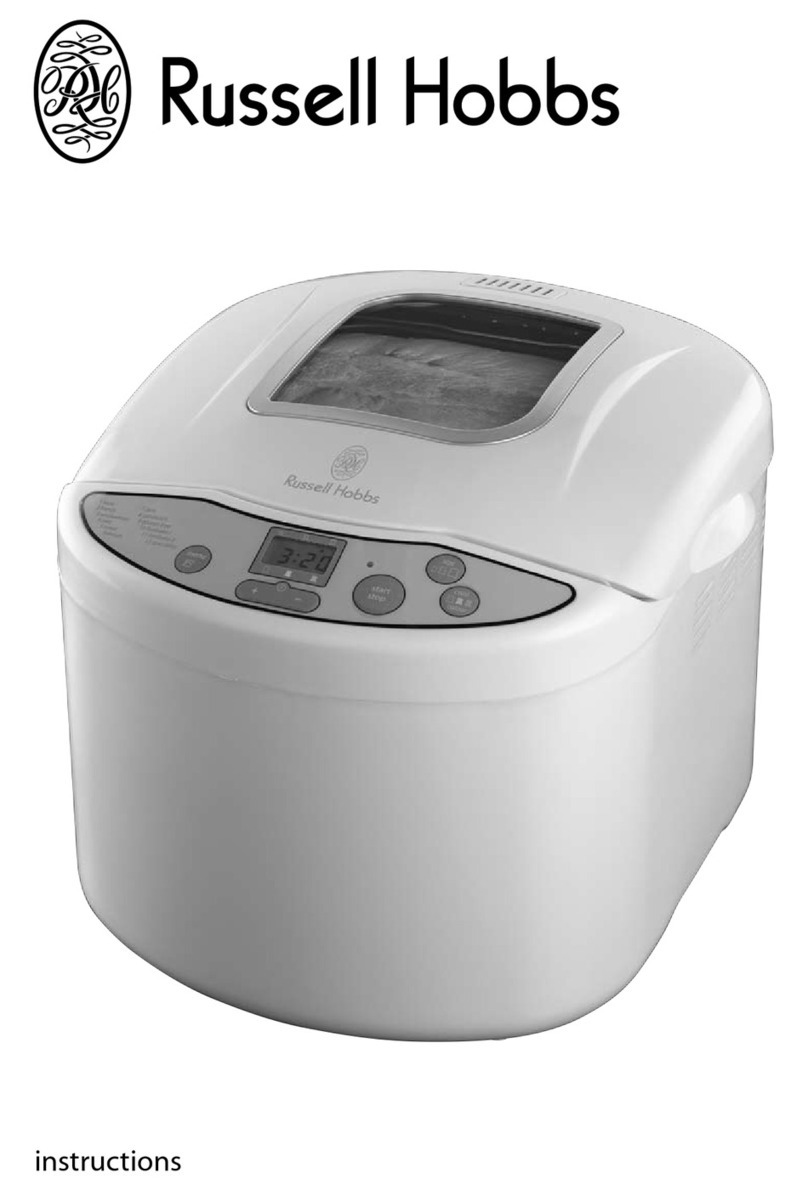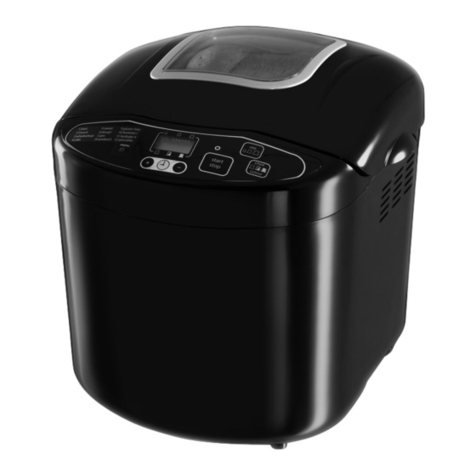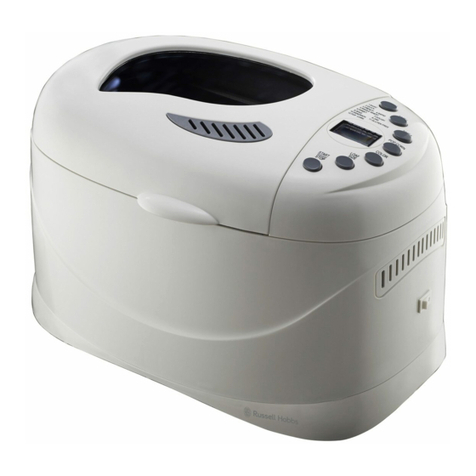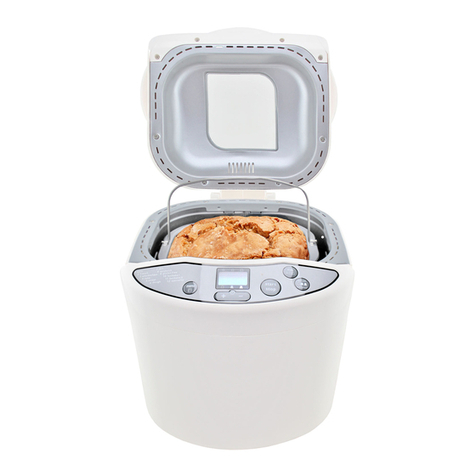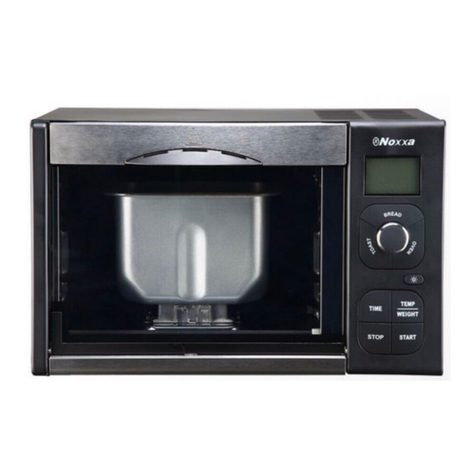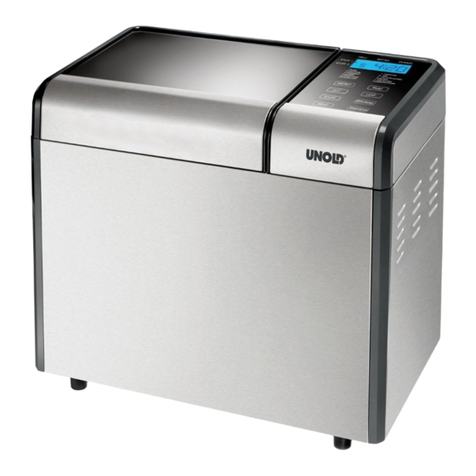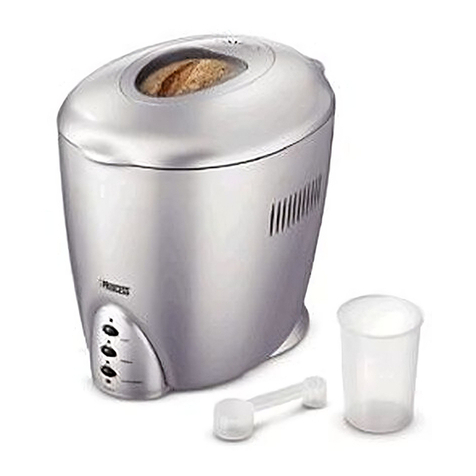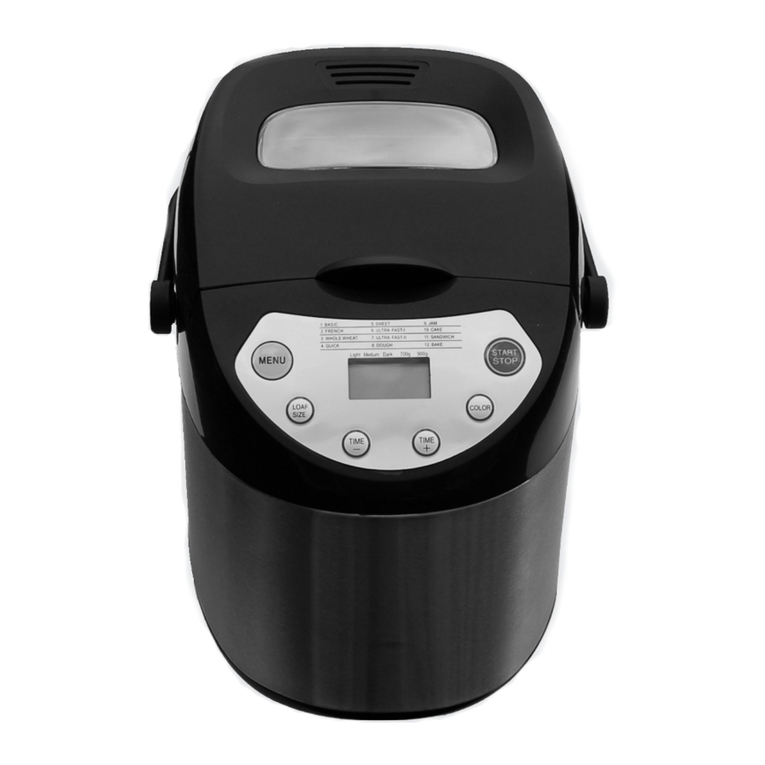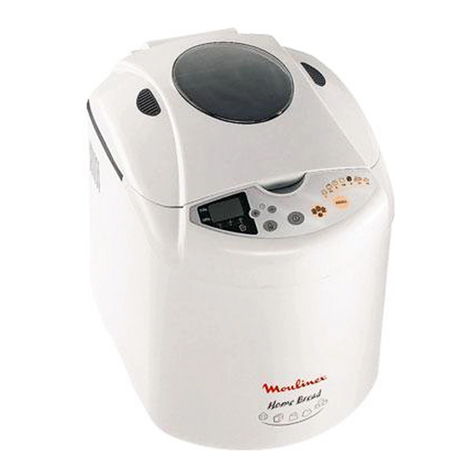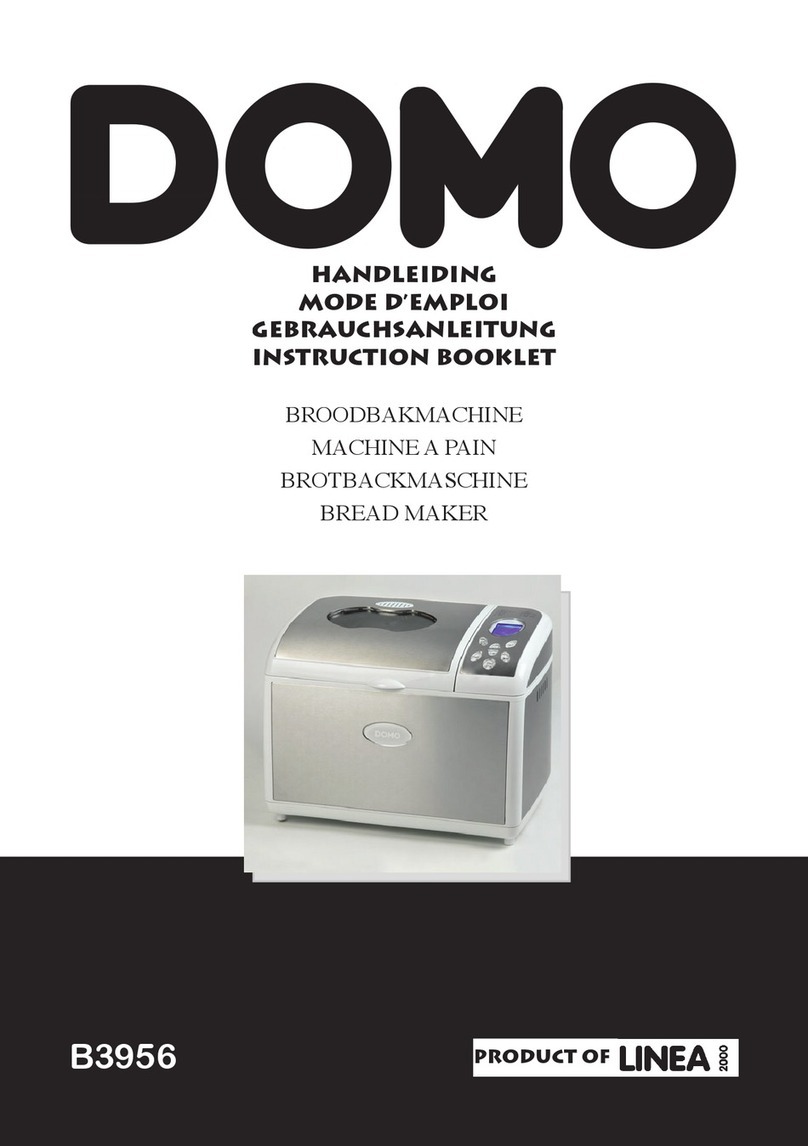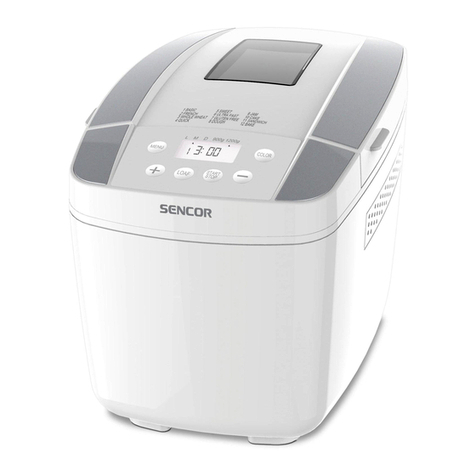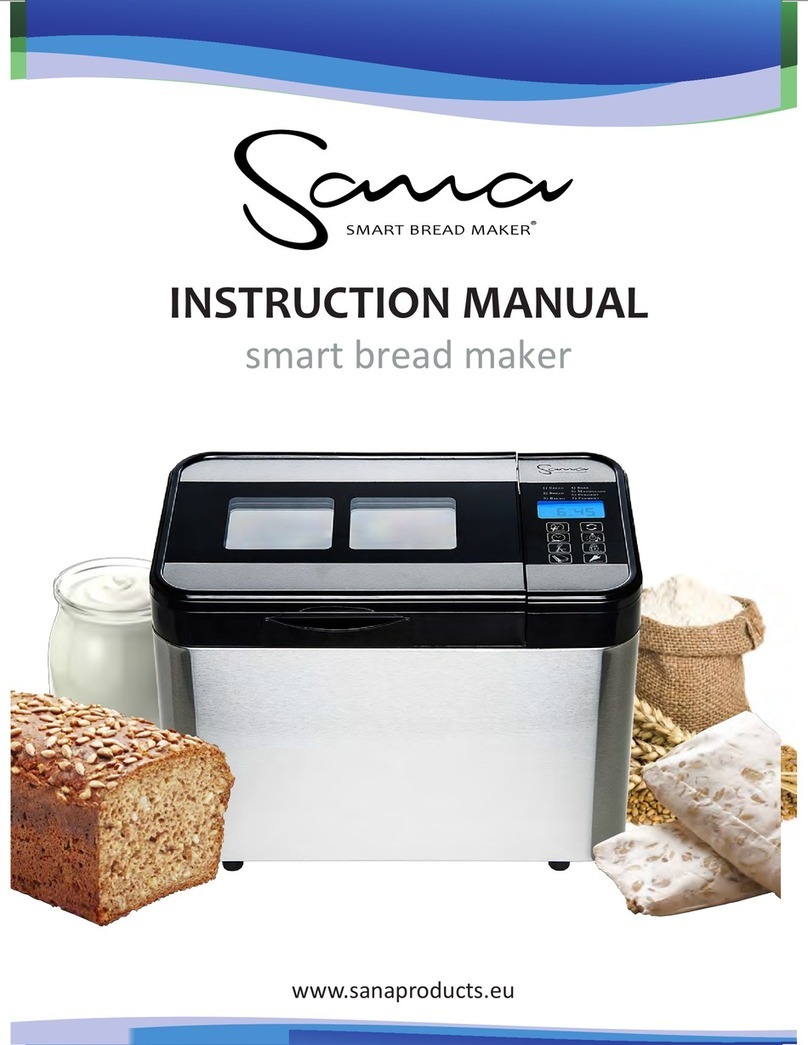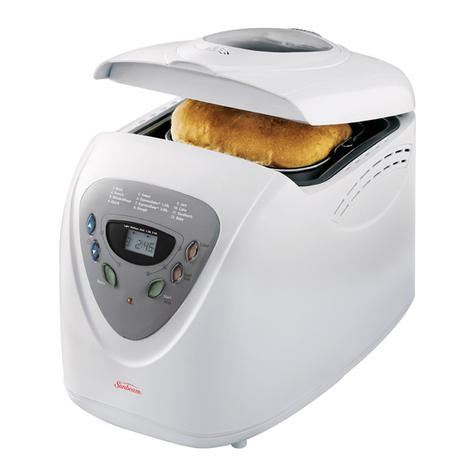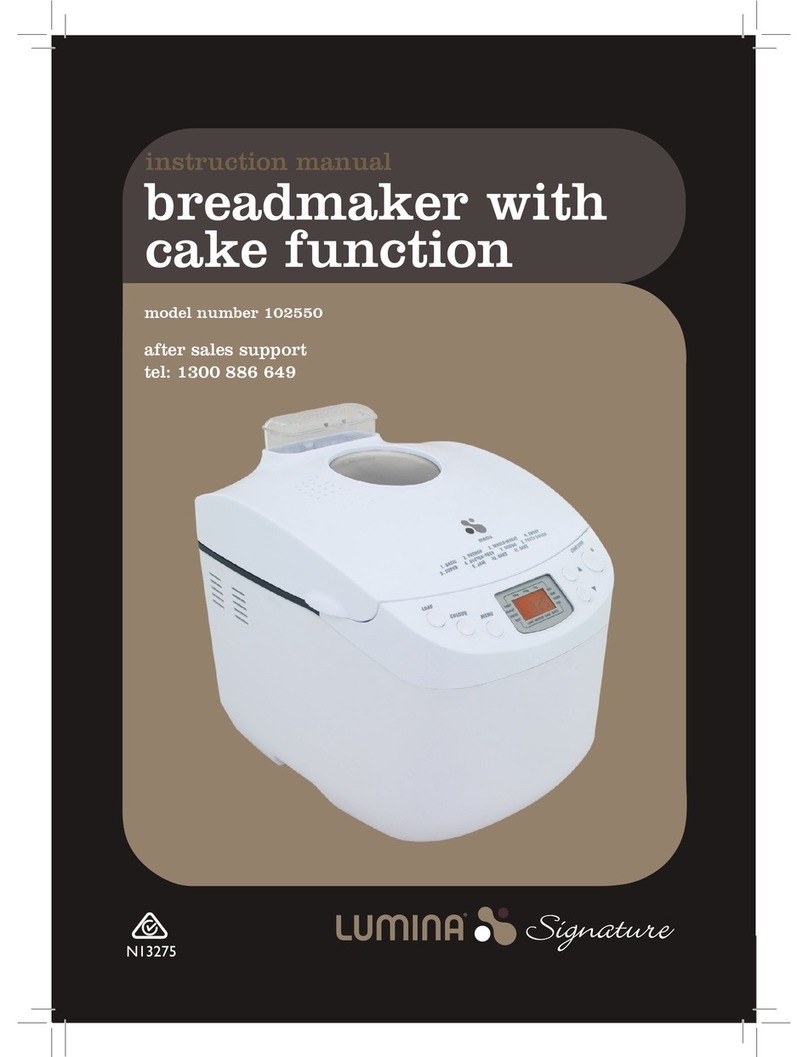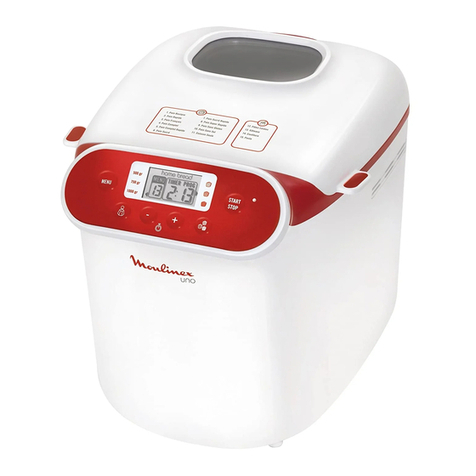
5
Fastbake I
(750g),
Fastbake II
(1kg)
These programmes cut the baking times to 85 minutes. Your bread will be smaller,
denser and coarser than normal, and additional ingredients (raisins, nuts etc.) may be
crushed or unevenly distributed. The water temperature should be 45 - 50 degrees C
to help speed up the process.
Speciality This program is specifically designed for the malt loaf recipe.
PREPARING YOUR BREAD MAKER
1. Sit the bread maker on a stable, level, heat-resistant surface. Don’t plug it in yet.
2. Open the lid and remove the loaf tin.
3. Fit the paddle to the shaft in the bottom of the loaf tin (Fig A).
4. Measure the ingredients and have them all to hand ready to add to the loaf tin.
USING YOUR BREAD MAKER
1. Place the ingredients into the loaf tin. Put them into the tin in the order that they are listed in the
recipe. Don’t let the yeast come into contact with the sugar or the salt. Add it last on top of the other
ingredients keeping it away from the sugar and the salt.
2. Fit the loaf tin into your bread maker as shown (Fig B) and turn it clockwise until it clicks. Lower the
loaf tin handle and close the lid.
3. Plug in your bread maker then use the menu button to select the program you want.
4. Select the loaf size (if the program allows) using the size button. Select the crust colour (if the
program allows) using the crust colour button.
5. Set the timer if you are going to use it. See USING THE TIMER.
6. Press the I/O button once to start the program. Your bread maker will beep to let you know the
program is running.
• The program will start and the remaining time will be shown on the display. Once the program has
finished, your bread maker will beep. We recommend that you remove the bread as soon as it is
baked but if you are unable to, there is a keep warm feature available. Bread will be automatically
kept warm for 60 minutes after baking. If you want to take the bread out straight away, end the
program using the I/O button.
• Have a look at the dough through the window after about 30 minutes of kneading (15 minutes for the
gluten-free program). If you spot any unincorporated ingredients round the walls of the loaf tin, use a
non-metallic soft spatula to ease them away from the walls back into the dough.
• Don’t open the lid unless you absolutely have to – then close it again as soon as possible.
ENVIRONMENT
The machine may work well in a wide range of temperatures, but there could be a difference in loaf size
between a very warm room and a very cold room.
USING THE TIMER/DELAY FUNCTION
Only the Basic, French, Wholewheat, Cake, Sweet, Dough, Sandwich, Gluten Free and Speciaility programs
allow you to use the timer. You may use the timer to set the finishing time up to 13 hours ahead (this
includes the recipe time).
1. Decide when you want your bread to be ready (e.g. 6 p.m.)
2. Check the current time (e.g. 7 a.m.)
3. Calculate the difference between the two times (e.g. 11 hours)
